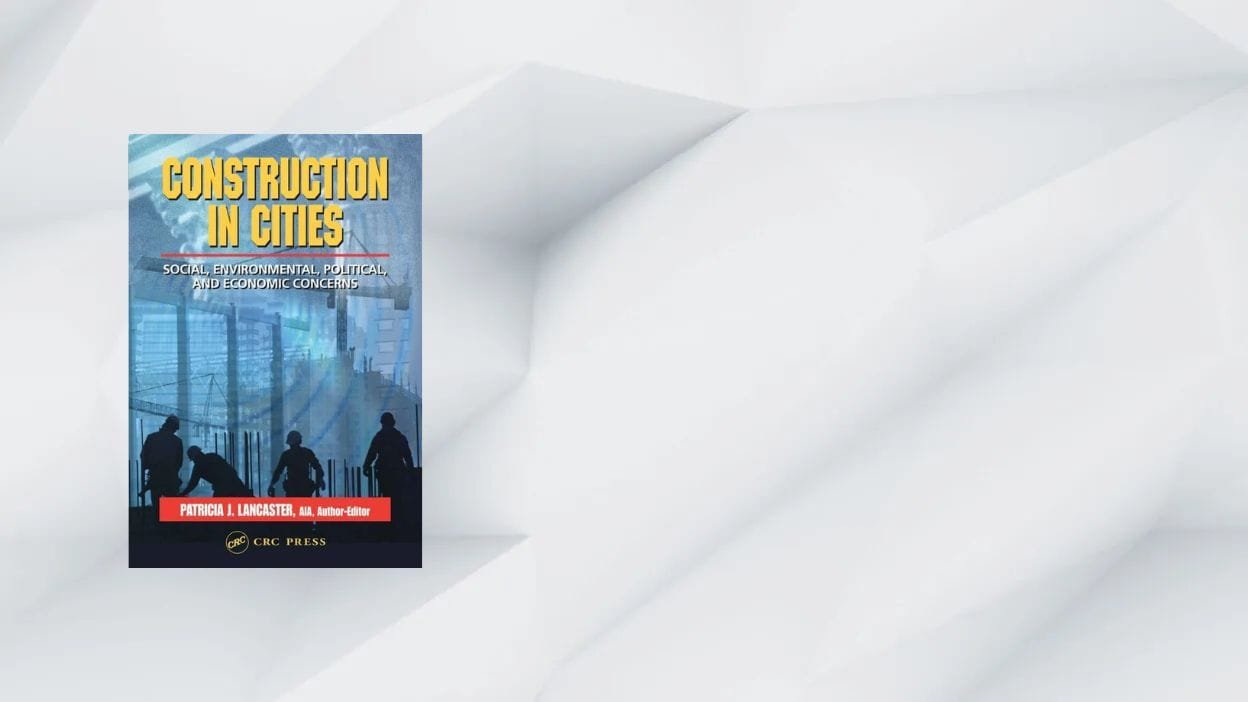Book at a Glance
| Detail | Value |
|---|---|
| Editor | Patricia J. Lancaster, AIA |
| Co‑editors | Edward S. Plotkin, P.E.; Jill N. Lerner, AIA |
| Edition / Year | 1st Edition (2001); Routledge paperback reissue 2019 |
| Pages | 268 pp. |
| Publisher | CRC Press / Taylor & Francis Group |
| ISBN | 0‑8493‑7486‑3 (hc); 978‑0367397784 (pb) |
| Target Readers | Civil & environmental engineers, urban planners, construction managers, grad students |
| Primary Keyword | Construction In Cities: Social, Environmental, Political, And Economic Concerns |
Why Construction In Cities Matters
Urban construction today is a labyrinth of regulations, community activism, archaeological surprises, and sustainability mandates. This handbook condenses over 500 years of collective practitioner experience into actionable guidance—covering everything from navigating city zoning boards to mitigating toxic‐air events on site. If you design, manage, or study capital projects in dense metropolitan areas, this single volume supplies the “what now?” answers when a buried trolley line, an endangered tree, or a last‑minute policy change threatens your schedule.
Chapter Highlights
- Regulatory Gauntlet – Step‑by‑step for permits, environmental impact statements, and community hearings.
- Below‑Ground Work – Practical tips for tunnels, deep foundations, and utility relocation.
- Case‑Study Portfolio – Five real‑world urban megaprojects dissected—budget, stakeholder politics, lessons learned.
- Environmental & Archeological Surprises – Protocols for asbestos, brownfields, and historic artifacts.
- Workforce & Safety – Strategies for union coordination, night shifts, and minimizing disruption to local residents.
(Every chapter ends with robust reference lists—ideal for thesis citations.)
Strengths
- Holistic Lens – Integrates social justice, environmental stewardship, economics, and policy—mirroring real‑world project complexity.
- Practical Playbook – Checklists, flow‑charts, and decision trees you can lift straight into project manuals.
- Broad Authorship – Contributions from architects, engineers, archaeologists, and agency officials give 360° insight.
Limitations
- Dated Tech Examples – Pre‑BIM workflows; readers must translate concepts to today’s digital‐twin tools.
- US‑Centric – Regulatory focus leans heavily on New York City precedents; international readers need local adaptations.
- Black‑and‑White Figures – Limited graphics quality in the original print run.
How It Compares
| Book | Scope | Best For |
|---|---|---|
| Construction In Cities: Social, Environmental, Political, And Economic Concerns | Social‑environmental risk + technical guidance | Urban megaproject leaders, grad courses |
| Megaproject Management (Flyvbjerg) | Strategy & cost overrun psychology | Policy analysts, executives |
| Green Building Illustrated (Ching & Adams) | Sustainable design details | Architects & LEED trainees |
SEO‑Friendly FAQ
Q1. Does Construction In Cities cover sustainability regulations?
Yes—dedicated sections explain environmental impact statements (EIS), brownfield remediation, and green infrastructure credits.
Q2. Is the book still relevant after two decades?
Absolutely. While tech examples predate BIM, the political, social, and regulatory hurdles it dissects remain universal in 2025 urban projects.
Q3. How detailed are the case studies?
Each case spans 12–15 pages, including budgets, schedules, stakeholder maps, and unexpected on‑site discoveries.
Q4. Where can I buy or access it?
Available via CRC Press, Routledge, ScienceDirect eBooks, and major retailers such as Amazon.

